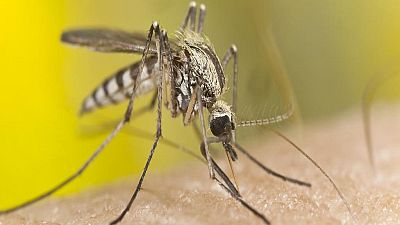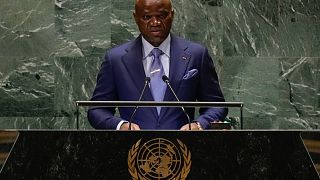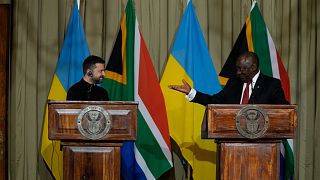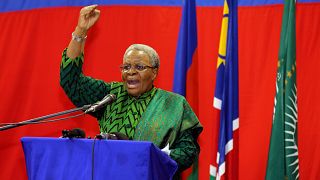South Africa
Researchers from the University of Pretoria are conducting a study in the country after recording a rise in the number of malaria cases in parts of the country, during winter.
Winter is low season for malaria transmission, as the disease is mostly contracted during the warmer and wetter months.
September to May are listed as malaria or high season months, while June to the end of August are known to be low season months.
Between June and August 2016 there were 794 cases versus 2,238 cases over that same period in 2017.
“We’d like to do annual collections, but more than one annual collection, we try and do different seasons, this is a winter season, so technically we would expect less malaria, but we actually noticed that there is an increase in this area, as I said of malaria cases, and because this is an area of highest incidents in the country, it just makes sense to come here and try to figure it out what the problem is,” said Dr. Taneshka Kruger, project manager at the university’s institute for sustainable malaria control.
Malaria infected about 219 million people in 2017 and killed around 435,000 of them – the vast majority babies and children in the poorest parts of Africa.
These figures are little changed from 2016, but global case numbers had previously fallen steadily from 239 million in 2010 to 214 million in 2015, and deaths from 607,000 to around 500,000 from 2010 to 2013.
The research being conducted in parts of Limpopo Province, which has a high risk of malaria, is designed to study the anopheles mosquito that transmits malaria.
“I’ve just collected our mosquitos out of our NTT trap (net trap) and this is great , this is really a good catch for out of season. So , I’m really excited ,will go take these back now , I’m going to identify which species they are and see if they are potentially malaria vectors,” said Dr. Megan Ridding an entomologist.
The researchers also hold awareness sessions with local communities and visit schools to educate students about the disease.
The students are encouraged to share what they have learnt in school when they go home to their families.
Existing malaria-fighting tools such as bed nets, medicines and insecticides are still being used to fight malaria alongside new vaccines.
Kenya recently added a malaria vaccine to its routine immunization schedule for babies and toddlers, becoming the third African country to roll out the vaccine.
The injectable vaccine, called RTS,S or Mosquirix, was developed by British drugmaker GlaxoSmithKline, to protect children from the most deadly form of malaria in Africa.
In Masisi village, residents are also being encouraged to test regularly for malaria to enable them find early treatment if needed.
“It is important to know, to them to know about this malaria thing so that they can know how to protect themselves from this kind of disease,” said Mpho Ramukosi, a Medical student interviewer.
Malaria infected about 219 million people in 2017 and killed around 435,000. The vast majority of malaria deaths are among babies and children in the poorest parts of Africa. Due to ongoing transmission, half the world’s population is still at risk of contracting the disease.
REUTERS












Go to video
UNICEF marks World Malaria Day with rollout of new vaccine in Mali
Go to video
Tanzania bans agricultural imports from South Africa and Malawi
Go to video
South Africa's tax row heads to court as implementation date nears
Go to video
South Africa appoints Mcebisi Jonas as special US envoy in bid to ease tensions
Go to video
South Africa: inquest into death of Nobel Peace Prize laureate Chief Albert Luthuli re-opened
Go to video
10.3 Million tons of food wasted in South Africa as chefs push for sustainability